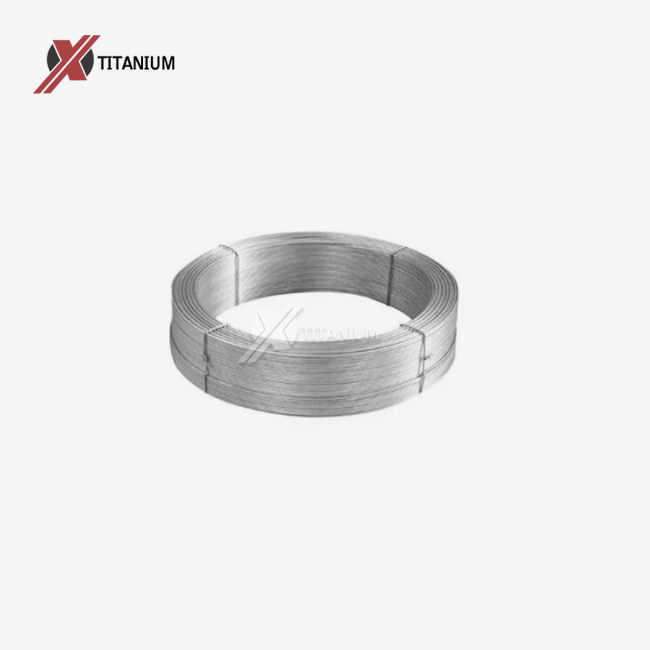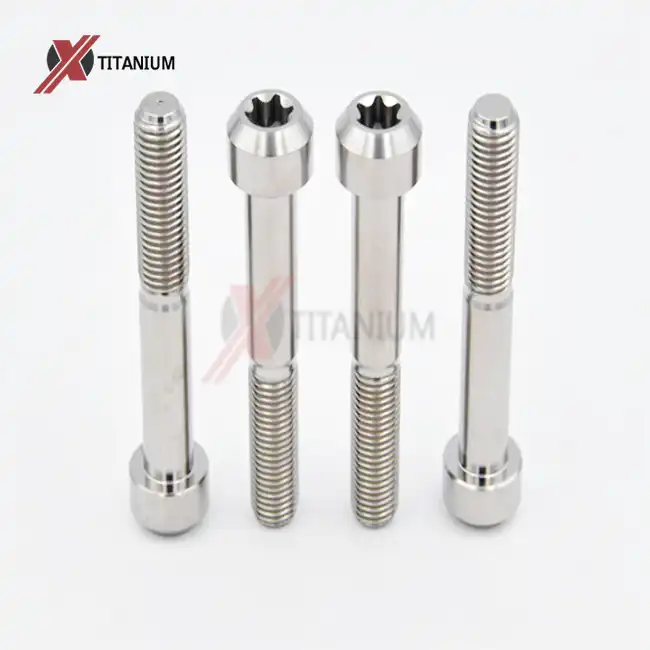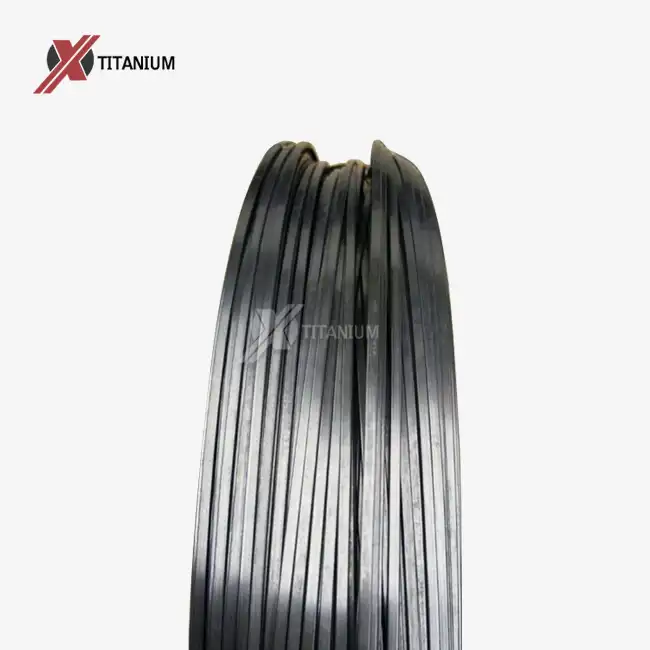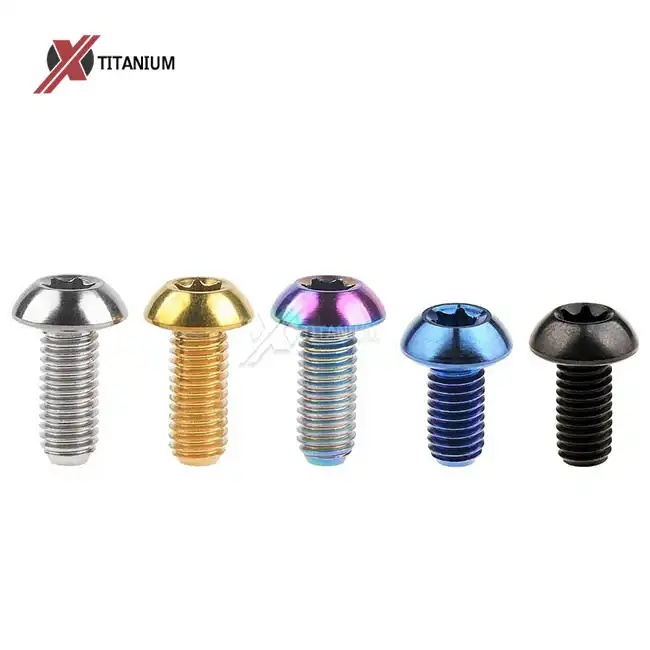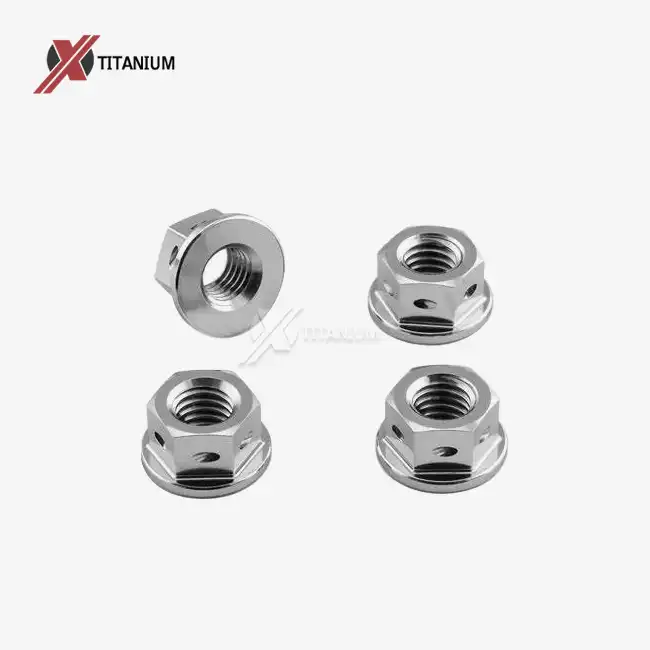The Unique Properties of Pure Titanium Wire in Medical Applications
Chemical Composition and Biocompatibility
Pure titanium wire owes its exceptional biocompatibility to its chemical composition. Consisting of 99.2% to 99.8% titanium, depending on the grade, this material forms a stable oxide layer when exposed to air or bodily fluids. This passive layer acts as a protective barrier, preventing corrosion and the release of potentially harmful ions into the surrounding tissues.
The biocompatibility of pure titanium wire is further enhanced by its low reactivity with human tissues. Unlike some other metals used in medical implants, titanium does not trigger significant immune responses or allergic reactions in most patients. This characteristic makes it an excellent choice for long-term implantation, as it minimizes the risk of chronic inflammation or rejection.
Mechanical Properties and Durability
Pure titanium wire boasts impressive mechanical properties that contribute to its success in medical implants. Its high strength-to-weight ratio allows for the creation of lightweight yet durable implants that can withstand the stresses of daily use. This is particularly beneficial in orthopedic applications, where implants must support significant loads while remaining as unobtrusive as possible.
The fatigue resistance of pure titanium wire is another critical factor in its durability. Medical implants are often subjected to repeated stress cycles, and titanium's ability to withstand these forces without failure ensures the longevity of the implant. This resilience translates to fewer revision surgeries and improved patient outcomes over time.
Osseointegration and Tissue Compatibility
One of the most remarkable properties of pure titanium wire in medical applications is its ability to promote osseointegration. This process involves the direct structural and functional connection between living bone tissue and the surface of the implant. Titanium's surface properties encourage the adhesion and proliferation of osteoblasts, the cells responsible for bone formation.
The micro-roughness of titanium surfaces can be tailored to enhance cell attachment and growth further. Various surface treatments, such as sandblasting or acid etching, can be applied to pure titanium wire to optimize its osseointegration potential. This characteristic is particularly valuable in dental implants and orthopedic devices, where a strong bond between the implant and surrounding bone is crucial for long-term success.
Manufacturing Processes and Quality Control for Medical-Grade Pure Titanium Wire
Raw Material Selection and Purification
The production of medical-grade pure titanium wire begins with the careful selection of high-purity titanium sponge. This raw material undergoes rigorous testing to ensure it meets the strict standards required for medical applications. The purification process involves multiple melting stages, often using electron beam or vacuum arc remelting techniques, to remove impurities and achieve the desired level of purity.
Once the titanium ingot is produced, it undergoes a series of forming processes to create the wire. These may include hot working, cold drawing, and annealing steps to achieve the desired diameter and mechanical properties. Throughout these processes, strict controls are maintained to prevent contamination and ensure the integrity of the material.
Surface Treatment and Finishing
The surface quality of pure titanium wire is critical for its performance in medical implants. Various surface treatments can be applied to enhance biocompatibility and functionality. These may include:
- Electropolishing to create a smooth, corrosion-resistant surface
- Anodization to form a controlled oxide layer with specific properties
- Plasma spraying to create a porous surface for improved tissue integration
- Coating with bioactive materials to enhance bone bonding
Each of these treatments is carefully controlled and validated to ensure consistency and efficacy. The choice of surface treatment depends on the specific application and desired properties of the implant.
Quality Assurance and Regulatory Compliance
The production of pure titanium wire for medical implants is subject to stringent quality control measures and regulatory requirements. Manufacturers must adhere to Good Manufacturing Practices (GMP) and comply with standards such as ISO 13485 for medical device quality management systems.
Quality assurance processes include:
- Batch testing for chemical composition and mechanical properties
- Non-destructive testing methods such as eddy current or ultrasonic inspection
- Microstructural analysis to ensure proper grain structure and phase composition
- Biocompatibility testing in accordance with ISO 10993 standards
These rigorous quality control measures ensure that each batch of pure titanium wire meets the exacting standards required for medical implants, providing healthcare professionals and patients with confidence in the safety and reliability of these critical components.
Advancements and Future Prospects of Pure Titanium Wire in Medical Implants
Innovative Surface Modifications
Research into advanced surface modifications for pure titanium wire continues to push the boundaries of implant performance. Novel techniques such as nanostructuring and biomimetic coatings are being explored to enhance biocompatibility and functionality further. These innovations aim to improve osseointegration, reduce infection risks, and even impart drug-eluting capabilities to titanium implants.
One promising area of research involves the development of antimicrobial surfaces on pure titanium wire. By incorporating nanoparticles or creating specific surface topographies, researchers are working to create implants that can actively resist bacterial colonization, potentially reducing the risk of implant-associated infections.
Additive Manufacturing and Customization
The advent of additive manufacturing technologies, such as 3D printing, is opening new possibilities for the use of pure titanium wire in medical implants. These techniques allow for the creation of complex, patient-specific implants with optimized geometries and internal structures. By leveraging the unique properties of titanium, designers can create implants that better mimic natural bone structures, potentially improving integration and long-term performance.
Additive manufacturing also enables the creation of porous titanium structures that can promote tissue ingrowth and vascularization. These advanced designs could lead to implants that more closely replicate the mechanical and biological properties of natural tissues, further enhancing biocompatibility and functional outcomes.
Integration with Smart Technologies
The future of pure titanium wire in medical implants may involve integration with smart technologies to create "intelligent" implants. Research is underway to develop implants that can monitor their own performance, detect potential complications, and even adapt to changing physiological conditions.
Some potential applications include:
- Sensors embedded in titanium implants to monitor bone healing or detect early signs of infection
- Implants with shape-memory properties that can adjust their configuration post-implantation
- Drug-eluting titanium implants that can release therapeutic agents in response to specific stimuli
These advancements could revolutionize patient care by providing real-time data to healthcare providers and enabling more personalized treatment approaches.
Conclusion
Pure titanium wire has emerged as a cornerstone material in the field of medical implants, thanks to its exceptional biocompatibility and versatile properties. Its unique combination of strength, corrosion resistance, and tissue-friendly characteristics makes it an ideal choice for a wide range of medical applications. From its ability to promote osseointegration to its potential for advanced surface modifications, pure titanium wire continues to drive innovation in implant technology. As research progresses and manufacturing techniques evolve, we can expect to see even more sophisticated and effective titanium-based implants that will further improve patient outcomes and quality of life.
At Baoji Chuanglian New Metal Material Co., Ltd., we are committed to advancing the field of medical implants through our high-quality pure titanium wire products. Our extensive experience in titanium manufacturing and research enables us to provide cutting-edge solutions for the medical industry. If you're interested in learning more about our pure titanium wire offerings or exploring custom solutions for your medical implant needs, please don't hesitate to contact us at info@cltifastener.com or djy6580@aliyun.com.
FAQ
What grades of pure titanium wire are commonly used in medical implants?
The most common grades are Grade 1, 2, 3, and 4, with Grade 2 being widely used due to its balance of strength and ductility.
How does the surface finish of pure titanium wire affect its performance in medical implants?
Surface finish can influence osseointegration, corrosion resistance, and bacterial adhesion. Common finishes include polished, pickled, and sandblasted surfaces.
What quality tests are performed on pure titanium wire for medical applications?
Tests typically include hardness testing, bending tests, and hydrostatic pressure tests to ensure mechanical integrity and performance.
Can pure titanium wire be customized for specific medical applications?
Yes, we offer OEM services to customize diameters, lengths, and surface finishes to meet specific requirements.
How does pure titanium wire compare to other materials used in medical implants?
Pure titanium wire offers superior corrosion resistance, biocompatibility, and strength-to-weight ratio compared to many alternative materials.
References
1. Liu, X., Chu, P. K., & Ding, C. (2004). Surface modification of titanium, titanium alloys, and related materials for biomedical applications. Materials Science and Engineering: R: Reports, 47(3-4), 49-121.
2. Geetha, M., Singh, A. K., Asokamani, R., & Gogia, A. K. (2009). Ti based biomaterials, the ultimate choice for orthopaedic implants – A review. Progress in Materials Science, 54(3), 397-425.
3. Elias, C. N., Lima, J. H. C., Valiev, R., & Meyers, M. A. (2008). Biomedical applications of titanium and its alloys. JOM, 60(3), 46-49.
4. Wang, K. (1996). The use of titanium for medical applications in the USA. Materials Science and Engineering: A, 213(1-2), 134-137.
5. Rack, H. J., & Qazi, J. I. (2006). Titanium alloys for biomedical applications. Materials Science and Engineering: C, 26(8), 1269-1277.
